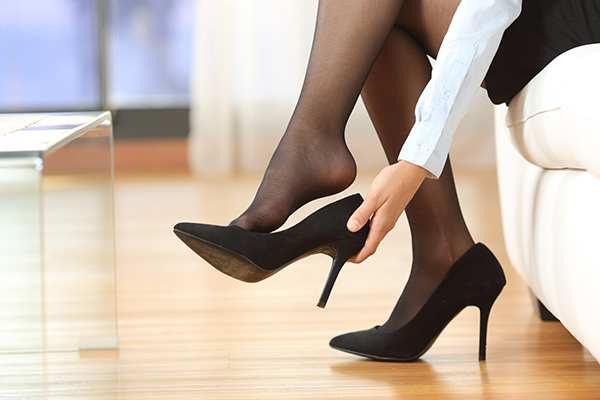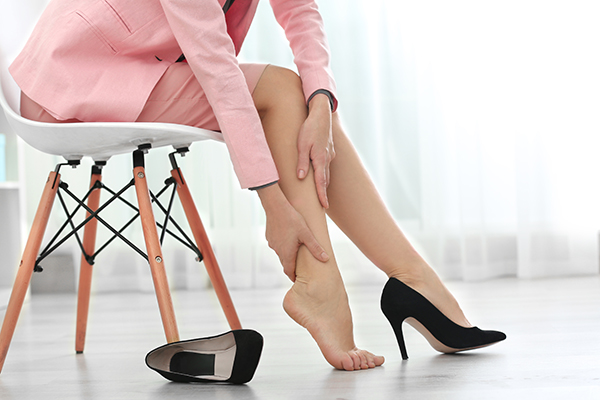High Heels and Foot Pain: All You Should Know
Whether to make a fashion statement, appear taller, look professional, or complete an outfit, many women like to wear high heels. However, wearing a high heel puts your foot in an awkward position and can lead to foot pain and other problems. If you don't want to give up your high heels, there are some things you can do to minimize the pain and health risks to your feet.

Survey
According to a recent survey, nearly three-quarters of all women wear high heels. Of those women, 77 percent wear high heels on special occasions, 50 percent wear them to parties or out to dinner, 33 percent wear them dancing, and 31 percent wear them to work. The number of women who wear high heels daily declined from 1986 (60 percent) to 1996 (50 percent) to 2003 (39 percent). Younger women are more likely to wear high heels daily—49 percent of women aged 18 to 24, 42 percent of women aged 25 to 49, and 34 percent of women aged 50 and over wear heels every day.
Another recent industry study showed similar results, with 72 percent of women wearing high heels and 39 percent wearing them daily. Of women wearing high heels, 59 percent reported toe pain and 54 percent reported pain in the ball of the foot.

Foot Problems
A doctor might diagnose any of the following foot conditions that can result from wearing high heels frequently:
- Corns and calluses: Wearing high heels can cause a corn on the top or side of your toes or a callus on the sole of your foot. The area of the foot affected becomes thick and painful. A podiatrist can pare or cut away the corn or callus.
- Bunions: High heels put pressure on the front of your foot and can cause the development of a bunion on the joint that connects your big toe to your foot. The bunion gets larger with time, making your big toe turn toward or on top of the adjacent toe.
- Hammertoe: High heels can put pressure on one or both joints in your second, third, fourth, and little toe, causing them to bend. Hammertoe progresses with time. Symptoms can be managed with noninvasive measures, but, if left untreated, the condition may require foot surgery.
- Plantar fasciitis: The increased pressure on your heels from wearing high heels can contribute to plantar fasciitis. You'll feel pain in your heel, or you may have a burning sensation or ache on the bottom of the foot. You can relieve the pain by staying off your feet, applying ice, using arch supports, or taking non-steroidal, anti-inflammatory drugs.
- Morton's Neuroma: Wearing high heels is linked to the development of Morton's Neuroma. This condition affects the ball of your foot, usually between the third and fourth toes. You may feel a sharp, burning pain in the ball of your foot, or your toes may sting, burn, or feel numb.
Solutions
If you don’t want to give up your high heels, there are things you can do to relieve the pain. Wear comfortable shoes when traveling to and from work and then change into your high heels at work. Lower the height of your high heels. Wedged heels give your foot more support. Wear open shoes to relieve the pressure on your toes. Place an insert or padding in your shoe. If you develop a foot problem, call an orthopedic foot specialist in Atlanta at OrthoAtlanta.
Contact your local OrthoAtlanta office, or visit www.OrthoAtlanta.com if you experience pain in your foot.

